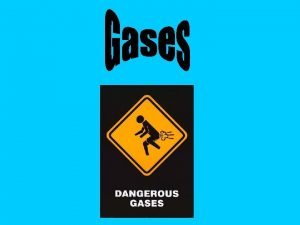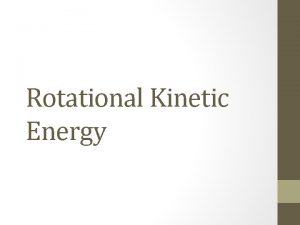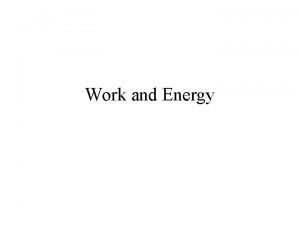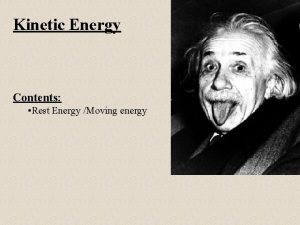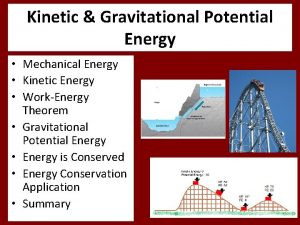KINETIC ENERGY AND POWER ENERGY Loosely defined as












- Slides: 12

KINETIC ENERGY AND POWER

ENERGY • Loosely defined as the ability to do work • There are many types of energy, but the total energy of a system always remains constant – Law of Conservation of Energy

KINETIC ENERGY • A moving object has the ability to do work and thus has energy

TRANSLATIONAL KINETIC ENERGY • KE = ½ mv 2 • Work is the change in KE W = KE 2 – KE 1 W = ½ mv 22 – ½ mv 12

• If work is positive, then it is increasing its kinetic energy • If work is negative, decreasing its kinetic energy

• Since work and kinetic energy are related, they are measured in the same unit – Joule (J) • The amount of KE is directly proportional to the mass – mass doubles, KE doubles • The amount of KE is directly prop to square of velocity – v doubles, KE quadruples

EXAMPLE 1 • A 145 g baseball is thrown with a speed of 25 m/s a) what is the KE? B) how much work is done on the ball if it started from rest?

EXAMPLE 2 • How much work is required to accelerate a 1000 kg car from 20 m/s to 30 m/s?

EXAMPLE 3 • A car traveling 60 km/hr can brake to a stop in a distance of 20 m. If the car is going twice as fast, 120 km/hr, what is the stopping distance?

POWER • Rate at which work is done • Power = Work/Time • Can also be considered the rate at which energy is transformed • Unit - J/s = 1 Watt (W) • For larger quantities: 1 horsepower (hp) = 746 W

EXAMPLE • A 70 kg jogger runs up a long flight of stairs in 4. 0 sec. The height of the stairs is 4. 5 m. A) what was the jogger’s power output in watts and horsepower? B) How much energy did it require?

EFFICIENCY •
 Kinetic energy is defined as
Kinetic energy is defined as A collection of a well-defined objects
A collection of a well-defined objects Kinetic energy examples
Kinetic energy examples Kinetic energy
Kinetic energy Kinetic energy and potential energy formula
Kinetic energy and potential energy formula Kinetic energy and potential energy formula
Kinetic energy and potential energy formula Loosely organized groups who share interests and activities
Loosely organized groups who share interests and activities A baseball player holds a bat loosely and bunts a ball
A baseball player holds a bat loosely and bunts a ball Potential energy spring
Potential energy spring Gravitational potential energy vs kinetic energy
Gravitational potential energy vs kinetic energy Gravitational potential energy vs kinetic energy
Gravitational potential energy vs kinetic energy Thermal energy and mass
Thermal energy and mass The law of conservation of energy states that
The law of conservation of energy states that
